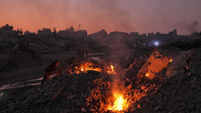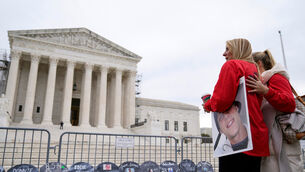Psychologists gain new insight on babies’ world
The study of 63 babies aged between two and eight months by the Economic and Social Research Council found they can group what they see in at least three different ways depending on its brightness, shape and proximity.
The attention infants pay to visual stimuli plays an important part in their mental development, affecting memory, motor skills, recognition of objects and other key skills.
While it was previously known that newborn babies could group information by brightness, grouping by shape had only been seen in babies aged six or seven months. Researchers found those aged four months were able to do so. Grouping by proximity had never before been tested in infants but was also shown to occur at four months.
The babies, who were sat in car seats facing screens, were shown images arranged in similarity in horizontal or vertical columns.
To test for grouping by shape for example babies were shown horizontal lines or columns made up of squares and circles. The image was constructed so that shape discrimination would be needed to ‘see’ lines or columns in the array.
To determine whether visual grouping had occurred they were shown images of bars of lines and columns. If the babies looked for a longer time at either the line or column bars on average, this was believed to be as an effect of the earlier lines or columns of shapes, indicating grouping.
Dr Emily Farran of Reading University, who carried out the research, said understanding the development of low-level processes such as attention was important to understand how higher level recognition processes develop. This in turn can help in understanding what happens to people affected by development disorders such as Williams syndrome.
“In many atypical disorders, people look at what’s happening in adults and assume that the same patterns of performance would be observed in children”, said Dr Farran.
“But often there are quite different patterns.”













